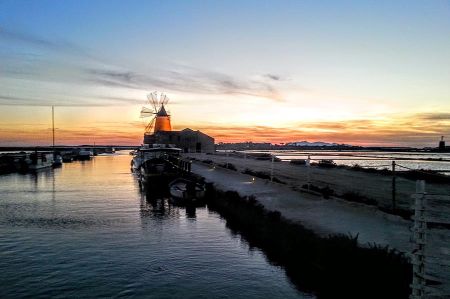Motya – Sacred Pool of Baal and not an inland port
- Written by Portal Editor
On the west coast of Sicily, in the middle of the naturally protected lagoon Lo Stagnone, lies the small island of San Pantaleo, around eight kilometres from Marsala, which was known far beyond Sicily 2000 years ago under the Greek name Motya (Italian Mozia and Sicilian Mozzia).
Due to its strategically favourable location, people settled on Motya as early as the Bronze Age and used the rich fish stocks for food and the lagoon as a protected harbour. At the beginning of the eighth century BC, Phoenician settlers reached the island and developed Motya into an important port city with trade connections throughout the central and western Mediterranean. This brought Motya into conflict with Carthage and resulted in a war in which Motya was temporarily destroyed in the 6th century, but then rebuilt larger and more fortified.
Conquest by Dionysius I of Syracuse
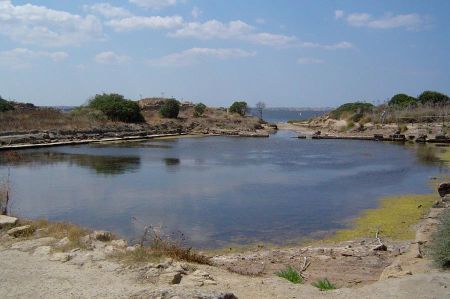 According to archaeological finds, the Phoenician settlement was founded in the first half of the 8th century BC. Founded in BC. However, there have been local settlements since the Chalcolithic Age, of which the Middle to Late Bronze Age eras (approx. 1650–900 BC) have been partially researched. At the beginning of the Phoenician settlement (approx. 800-750 BC), Motya was probably “just” a trading post. The focus of settlement was the north of the island. In the second half of the 7th century the settlement expanded southwards and in the 6th century it developed to the point where Motya could be described as a town.
According to archaeological finds, the Phoenician settlement was founded in the first half of the 8th century BC. Founded in BC. However, there have been local settlements since the Chalcolithic Age, of which the Middle to Late Bronze Age eras (approx. 1650–900 BC) have been partially researched. At the beginning of the Phoenician settlement (approx. 800-750 BC), Motya was probably “just” a trading post. The focus of settlement was the north of the island. In the second half of the 7th century the settlement expanded southwards and in the 6th century it developed to the point where Motya could be described as a town.
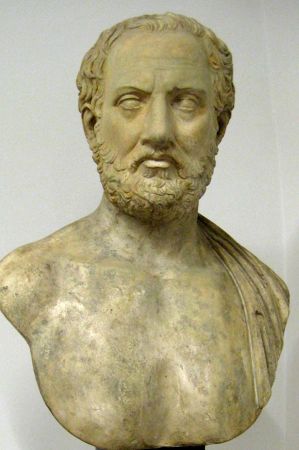 A paved road, described by Diodorus and visible on satellite images, still exists in parts today and led across the lagoon floor from the north side of the island to the main island of Sicily to Birgi Vecchioe. Archaeologists are still researching whether this road was just above or just below the water surface at the time it was in use.
A paved road, described by Diodorus and visible on satellite images, still exists in parts today and led across the lagoon floor from the north side of the island to the main island of Sicily to Birgi Vecchioe. Archaeologists are still researching whether this road was just above or just below the water surface at the time it was in use.
Around 650 B.C. By 400 BC the settlement had developed into a busy port city, with maritime trade extending to the central and western Mediterranean. This prosperity led to a rivalry with the powerful Carthage on the North African coast, despite their ancient, shared ancestry. This led to Carthage being conquered in the mid-6th century BC. BC Motya was defeated and destroyed for the first time.
Motya is first mentioned by Hecataeus of Miletus
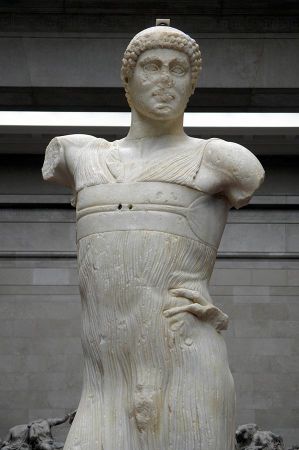 Motya is first mentioned by Hecataeus of Miletus and Thucydides counts it among the main Phoenician colonies in Sicily at the time of the Athenian expedition in 415 BC. A few years later (409 BC), when the Carthaginian army under General Hannibal Mago landed on the promontory of Lilybaeum, he positioned his fleet for security in the Gulf around Motya while he advanced along the coast with his land forces, to attack Selinus. After the fall of the latter city, it is said that Hermocrates, the Syracusan exile, who had settled on the ruins, ravaged the areas of Motya and Panormus. During the Carthaginians' second campaign under Hamilcar (407 BC), these two ports became permanent stations of the Carthaginian fleet.
Motya is first mentioned by Hecataeus of Miletus and Thucydides counts it among the main Phoenician colonies in Sicily at the time of the Athenian expedition in 415 BC. A few years later (409 BC), when the Carthaginian army under General Hannibal Mago landed on the promontory of Lilybaeum, he positioned his fleet for security in the Gulf around Motya while he advanced along the coast with his land forces, to attack Selinus. After the fall of the latter city, it is said that Hermocrates, the Syracusan exile, who had settled on the ruins, ravaged the areas of Motya and Panormus. During the Carthaginians' second campaign under Hamilcar (407 BC), these two ports became permanent stations of the Carthaginian fleet.
Diodorus also reports that the city was founded in 397 BC. BC was conquered by Dionysius I of Syracuse. Although Motya was then recaptured by the Carthaginians, the citizens preferred to settle in the newly founded and rapidly flourishing Lilybaion, which was considered impregnable. Only a few landowners remained on the island and farmed there until the end of the First Punic War. However, the settlement no longer had any significance, which is why it was no longer mentioned by ancient authors.
The settlement on the small island is interesting because...
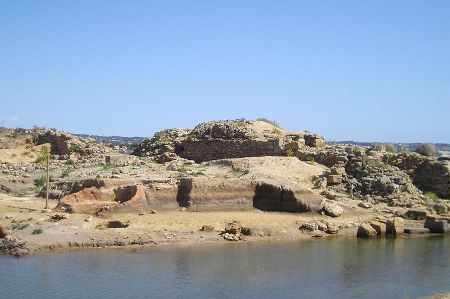 The settlement on the small island is interesting because after its destruction by Dionysius I of Syracuse there was never any more extensive settlement there and Motya therefore offers archaeologists the rare opportunity to examine an unbuilt Phoenician city. Due to tectonic changes, the existing connection to the main island has disappeared, but the road is still clearly visible in the shallow water of the lagoon.
The settlement on the small island is interesting because after its destruction by Dionysius I of Syracuse there was never any more extensive settlement there and Motya therefore offers archaeologists the rare opportunity to examine an unbuilt Phoenician city. Due to tectonic changes, the existing connection to the main island has disappeared, but the road is still clearly visible in the shallow water of the lagoon.
The Athenian strategist and historian Thucydides reports that Motya was one of the three cities to which the Phoenicians retreated after the Greek colonization of Sicily spread further and further west. Particularly important for Thucydides' view of historical forces are his assumptions about human nature and the motives of human action, which also fundamentally influence political conditions.
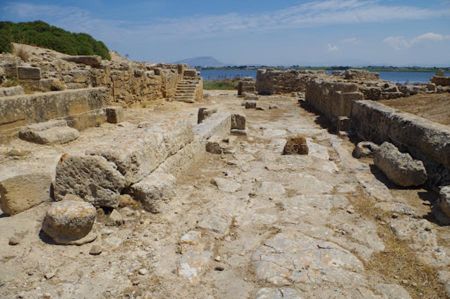 Of the once powerful city of Motya, some fortifications as well as the Kothon, the sanctuary “Cappiddazzu”, the Tofet and foundation walls of some houses still remain today. A small museum houses ceramics, small sculptures, coins and the like found during the excavations.
Of the once powerful city of Motya, some fortifications as well as the Kothon, the sanctuary “Cappiddazzu”, the Tofet and foundation walls of some houses still remain today. A small museum houses ceramics, small sculptures, coins and the like found during the excavations.
As early as the beginning of the 20th century, archaeologists came across the remains of the Phoenician city and excavated, among other things, remains of the city wall, relics of temples and a harbour. The remains of a rectangular, 52 meter long and 37-meter-wide basin were also found in the south of Motya. Because a channel appeared to extend to the sea at one end of this basin, archaeologists at the time interpreted it as a so-called Kothon. “The term Kothon was used by Greek and Latin sources to describe the military port of Carthage,” explains Lorenzo Nigro of Sapienza University of Rome. This was an artificially created inland port in the Phoenician city.
Athenian strategist and historian Thucydides
 It was assumed that the Kothon was also a harbour basin here. Recent research by Lorenzo Nigro of the Sapienza Università di Roma shows the Kothon of Mozia as a sacred pond in the centre of a sacred precinct. In the middle of the pond there is a podium on which stood a statue of Baal (god), which was probably 2.40 m high.
It was assumed that the Kothon was also a harbour basin here. Recent research by Lorenzo Nigro of the Sapienza Università di Roma shows the Kothon of Mozia as a sacred pond in the centre of a sacred precinct. In the middle of the pond there is a podium on which stood a statue of Baal (god), which was probably 2.40 m high.
The holy precinct is surrounded by a temenos, a round, three-meter-high wall with a diameter of 118 m. In addition to the Kothon temple of Baal (god) and a temple of Astarte, this includes another building known as the “Sanctuary of the Holy Waters”. This means that the 2,500-year-old building could have been one of the largest sacred pools in the preclassic Mediterranean.
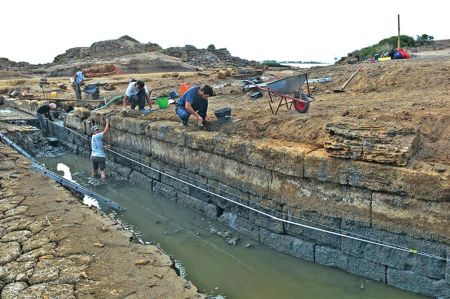 Because of its similarity to the Carthaginian Kothon, the Motya basin was also considered to be such an inland port according to previous interpretations. However, dating revealed that the supposed connecting canal to the sea was only built by the Romans and therefore long after the Phoenician era. Previously, the basin was only fed by three freshwater springs, as the archaeological team reports.
Because of its similarity to the Carthaginian Kothon, the Motya basin was also considered to be such an inland port according to previous interpretations. However, dating revealed that the supposed connecting canal to the sea was only built by the Romans and therefore long after the Phoenician era. Previously, the basin was only fed by three freshwater springs, as the archaeological team reports.
But the surroundings of the Motya basin are even more crucial: the new excavations revealed that it was surrounded by three large temple buildings: a large temple of Baal, which was located on the eastern long side of the basin, a temple of Astarte a on the north side and the temple of holy water on the northern long side. "Excavations from 2009 to 2021 also revealed the Temenos Wall, a 0.70 to 1.50 thick and three-meter-high wall that enclosed the 'Kothon' and the temples in a circular area 118 meters in diameter," reports Nigro. According to the archaeologist, the position of the three temples around the basin, altars, steles and votive offerings indicate that this was a separate Phoenician temple complex - "a place of religious activities that were dedicated to the holy waters, the sky and “It was dedicated to the gods associated with it,” says Nigro.
Remains of the city wall, relics of temples and a harbour
“The pool was at the centre of one of the largest cult complexes in the Preclassic Mediterranean and probably also served cultic purposes,” says Nigro. Remains of a statue and a stone pedestal indicate that a large statue of Baal once stood in the middle of the basin. Given that the temple and the basin are partly oriented towards astronomical aspects, the complex could have helped the Phoenicians to observe the movement and positions of constellations and stars that were important to them, as the archaeologist explains.
“The re-interpretation of the Motya Kothon makes it one of the largest and best-studied sacred pools in the Preclassic Mediterranean,” states Nigro. “Together with the ‘Maabed’ in Syrian Marit, it illustrates the various functions and versatile symbolism of cult installations in the Phoenician world.”
Please read as well:
With the e-bike to the beach IJmuiden aan Zee
Swedish Kanelbullar – the slightly different cinnamon rolls
